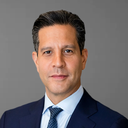Posted underBreast Augmentation q&a
Will a 325cc be big enough for a small frame? I"m 5'5", 115lbs, small frame.
I am 5'5, 115lbs, thin body, small frame. I'm scheduled to have my BA in two weeks but im not sure about the size, my doctor recommended 325cc silicone implant under the muscle. I'd like a fuller breast ( medium or full C cup if that make sense) but im not sure if the 325 will do. Im currently 32b in bra size! Im just scared that going more than that would be too much for me. Any suggestions??!!
Answers (11)
From board-certified doctors and trusted medical professionals
Dr. Paul Vitenas, Jr., MD

Dr. Paul Vitenas, Jr., MD
Board Certified Plastic Surgeon
Answer
Dr. Steven J. Rottman, MD, FACS

Dr. Steven J. Rottman, MD, FACS
Board Certified Plastic Surgeon
Answer
Dr. Marshall T. Partington, MD, FACS

Dr. Marshall T. Partington, MD, FACS
Board Certified Plastic Surgeon
Answer
Dr. Martin Jugenburg, MD

Dr. Martin Jugenburg, MD
Certified Plastic Surgeon
Answer
Dr. Nana N. Mizuguchi, MD, FACS

Dr. Nana N. Mizuguchi, MD, FACS
Board Certified Plastic Surgeon
Answer
Dr. Christopher J. Davidson, MD, FACS

Dr. Christopher J. Davidson, MD, FACS
Board Certified Plastic Surgeon
Answer
Dr. C. Bob Basu, MD, MPH, FACS
Dr. C. Bob Basu, MD, MPH, FACS
Board Certified Plastic Surgeon
Answer
Dr. Tom J. Pousti, MD
Dr. Tom J. Pousti, MD
Board Certified Plastic Surgeon
Answer
Dr. David Graham, MD
Dr. David Graham, MD
Board Certified Plastic Surgeon
Answer
More Breast Augmentation Questions
See all Breast Augmentation Q&AWE SEND PRETTY
EMAILS
What’s trending? Who’s turning heads? Which TikTok myths need busting? We’ve got you. No fluff, no gatekeeping—just real talk. Get our free, unfiltered newsletter.
